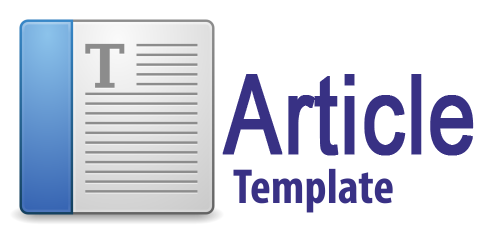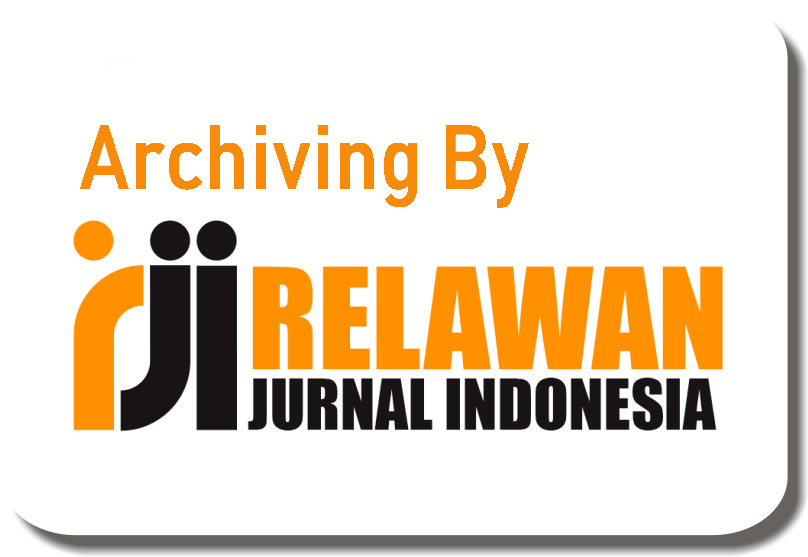Developing Infographics to Teach Speaking Through CakeApp for Tourism Students
Abstract
Enhancing students' speaking abilities requires integrating technology into language training, particularly in professional settings like tourism. For vocational high school (SMK) students working in the tourism industry, speaking is an essential skill because they must be able to interact with foreign tourists. The goal of this project is to create infographics based on CakeApp that will help Grade XII tourism students at Buleleng's vocational high schools learn how to speak. The study uses Richey & Klein, (2005) Design and Development (D&D) framework in conjunction with the ADDE (Analysis, Design, Development, Evaluation) model. The end result is a collection of infographics made to help teachers of English incorporate CakeApp into their speaking lessons. With an average score of 91.5%, expert validation results show that the infographics are of extremely high quality. These results imply that infographics based on CakeApp successfully improve students' speaking practice. From a practical standpoint, the product provides teachers at tourism vocational schools with an invaluable teaching tool.
Keywords
Full Text:
PDFReferences
Artini, L. P., Nilan, P., & Threadgold, S. (2011). Young indonesian cruise workers, symbolic violence and international class relations. Asian Social Science, 7(6), 3–14. https://doi.org/10.5539/ass.v7n6p3
Chaniago, A. D. (2022). the Effect of Cake Usage As Mobile Assisted Language Learning on Students’ English Speaking Skill in Smp Hang Tuah 1 Belawan. ETERNAL (English, Teaching, Learning, and Research Journal), 8(1), 131–144. https://doi.org/10.24252/eternal.v81.2022.a9
Chen, F., Ruiz, N., Choi, E., Epps, J., Khawaja, M. A., Taib, R., Yin, B., & Wang, Y. (2012). Multimodal behavior and interaction as indicators of cognitive load. ACM Transactions on Interactive Intelligent Systems, 2(4). https://doi.org/10.1145/2395123.2395127
Derakhshan, A., Khalili, A. N., & Beheshti, F. (2016). Developing EFL Learner’s Speaking Ability, Accuracy and Fluency. English Language and Literature Studies, 6(2), 177. https://doi.org/10.5539/ells.v6n2p177
Dewantari, F., Utami, I. G. A. L. P., & Santosa, M. H. (2021). Infographics and independent learning for English learning in the secondary level context. Journal on English as a Foreign Language, 11(2), 250–274. https://doi.org/10.23971/jefl.v11i2.2784
Faisal Razi1, Muslem1, A., & Fitrisia1, D. (2015). TEACHERS’ STRATEGIES IN TEACHING SPEAKING SKILL TO JUNIOR HIGH SCHOOL STUDENTS. English Education Journal, 6.
Findawati, Y., & Suprianto. (2014). Bahan ajar multimedia interaktif kewirausahaan SMK menggunakan model pembelajaran problem based learning. Jurnal Nasional Teknik Elektro Dan Teknologi Informasi , 3(4), 257–263.
Gardner, R. C. (2012). Second Language Acquisition: A Social Psychological Perspective. The Oxford Handbook of Applied Linguistics, (2 Ed.), April 2018, 1–16. https://doi.org/10.1093/oxfordhb/9780195384253.013.0014
Gebre, E. (2018). Learning with multiple representations: Infographics as cognitive tools for authentic learning in science literacy. Canadian Journal of Learning and Technology, 44(1), 1–24. https://doi.org/10.21432/cjlt27572
Henriksen, D., Henderson, M., Creely, E., Ceretkova, S., Černochová, M., Sendova, E., Sointu, E. T., & Tienken, C. H. (2018). Creativity and Technology in Education: An International Perspective. Technology, Knowledge and Learning, 23(3), 409–424. https://doi.org/10.1007/s10758-018-9380-1
Hermawati, S., Bte Abdul, N., & AM, S. A. (2023). Effectiveness of Using Cake Application on Students’ Pronunciation Skills At Smp Unismuh Makassar. English Language Teaching Methodology, 3(3), 309–316. https://doi.org/10.56983/eltm.v3i3.536
Lunga, M. L., & Howard, C. D. (2022). Eureka! An Early Career Designer’s Insight on the Design Process. International Journal of Designs for Learning, 13(2), 40–54. https://doi.org/10.14434/ijdl.v13i2.32356
Marden, M. P., & Herrington, J. (2022). Asynchronous text-based communication in online communities of foreign language learners: Design principles for practice. Australasian Journal of Educational Technology, 38(2), 83–97. https://doi.org/10.14742/ajet.7370
Nhan, L. K., & Yen, P. H. (2021). the Impact of Using Infographics To Teach Grammar on Efl Students’ Learning Motivation. European Journal of Foreign Language Teaching, 5(5), 85–102. https://doi.org/10.46827/ejfl.v5i5.3919
Octavianita, A., Fitri, N. R., Rafinazly, R., & Ihsan, M. T. (2022). The Effectiveness of Using Cake Application in Improving Students Speaking Skills. AUFKLARUNG: Jurnal Kajian Bahasa, Sastra Indonesia, Dan Pembelajarannya, 1(2), 80–85.
Pertiwi, D. R., & Kusumaningrum, M. A. D. (2021). the Infographic Projects in Speaking Activities. JELLT (Journal of English Language and Language Teaching), 5(1), 52–62. https://doi.org/10.36597/jellt.v5i1.10026
Rahmani, I. L., Sabat, Y., & Putranto, H. R. (2021). The Effectiveness of Cake Apps Towards Students’ Speaking Ability to Second Semester Students of English Education Study Program at STKIP PGRI Sidoarjo. STKIP PGRI Sidoarjo.
Ratminingsih, N. M., Artini, L. P., & Padmadewi, N. N. (2017). Incorporating self and peer assessment in reflective teaching practices. International Journal of Instruction, 10(4), 165–184. https://doi.org/10.12973/iji.2017.10410a
Ratminingsih, N. M., Gede Budasi, I., Santosa, M. H., Padmadewi, N. N., Artini, L. P., Putu, I., Purandina, Y., Pendidikan, P., Inggris, B., & Asing, J. B. (2023). Discovery Learning Model Optimizing Digital Thematic Multilingual Dictionary to Improve Literacy Skills. Journal of Education Technology, 7(4), 619–628. https://doi.org/10.23887/jet.v7i4.671
Ratminingsih, N. M., Padmadewi, N. N., Nitiasih, P. K., Artini, L. P., & Ana, I. K. T. A. (2024). Does Translanguaging Enhance Learning? Examining EFL Students’ Perceptions and Success in Bali. Voices of English Language Education Society, 8(3), 605–617. https://doi.org/10.29408/veles.v8i3.27261
Richey, R. C., & Klein, J. D. (2005). Developmental research methods: Creating knowledge from instructional design and development practice. Journal of Computing in Higher Education, 16(2), 23–38. https://doi.org/10.1007/BF02961473
Santosa, M. H., & Yasa, I. G. B. K. (2025). Investigation of factors influencing EFL students’ satisfaction in online learning: A literature review. Jurnal Pendidikan Bahasa Inggris Undiksha, 13(1), 104–115. https://doi.org/10.23887/jpbi.v13i1.92953
Santosa Made Hery, Gusti Ayu Made Trisna Yanti, and L. D. S. A. (2024). THE INTEGRATION OF GOOGLE TRANSLATE AS A MACHINE TRANSLATION AID IN EFL STUDENTS’ THESIS COMPOSITION. 27(1), 214–229.
Sudana, P. A. P., Ratminingsih, N. M., Padmadewi, N. N., & Adnyani, N. L. P. S. (2024). Industry-Driven Task Needs and Syllabus Recommendation for Business English Materials. International Journal of Language Education, 8(4), 734–748. https://doi.org/10.26858/ijole.v8i4.70001
Sumadi. (2010). Pendidikan dan Latihan Profesi Guru(PLPG) Mapel Dalam Pembelajaran Bahasa Dan Sastra Indonesia.
Utami, I. G. A. L. P., & Prestridge, S. (2018). How English teachers learn in Indonesia: Tension between policy-driven and self-driven professional development. Teflin Journal, 29(2), 245–265. https://doi.org/10.15639/teflinjournal.v29i2/245-265
Wahyuni, K., & Fitri, M. (2023). The Influence of Cake Learning Application on Students’ Speaking Ability. Indonesian Journal of Integrated English Language Teaching (IJIELT), 9(1), 2964–6448. http://dx.doi.org/10.24014/ijielt.v9i1.24687
Widodo, H. P. (2016). Teaching English for Specific Purposes (ESP): English for Vocational Purposes (EVP). English Language Education, 5, 277–291. https://doi.org/10.1007/978-3-319-38834-2_19
Wu, M., & Kuwajima, K. (2022). the Effects of Infographics on Enhancing Language Learning Outcomes and Motivation in a Japanese Efl Context. European Journal of Foreign Language Teaching, 6(4), 1–27. https://doi.org/10.46827/ejfl.v6i4.4515
DOI: https://doi.org/10.31004/jele.v10i5.1173
Refbacks
- There are currently no refbacks.
Copyright (c) 2025 Ketut Aya Sasmitha, Iga Lokita Purnamika Utami, Dewa Ayu Eka Agustini

This work is licensed under a Creative Commons Attribution-ShareAlike 4.0 International License.



